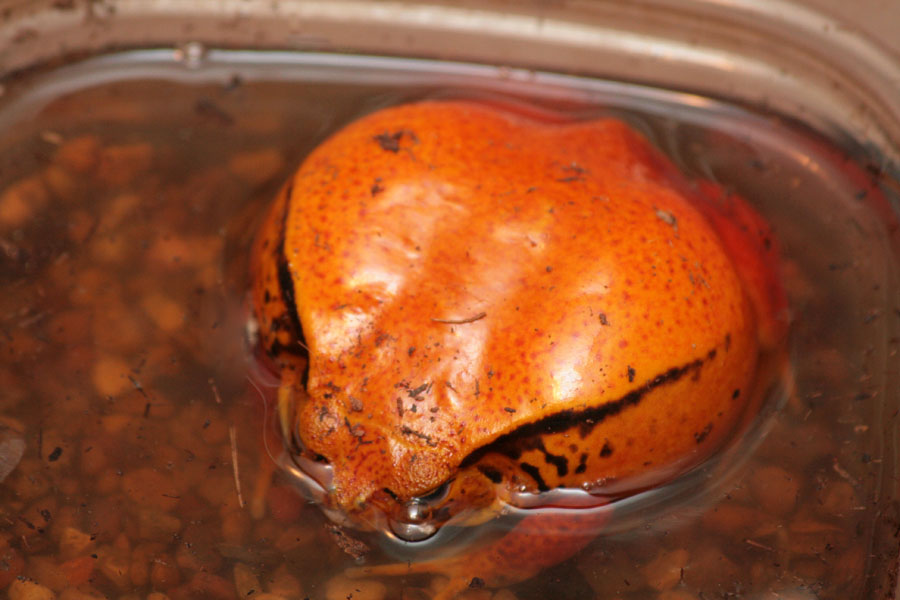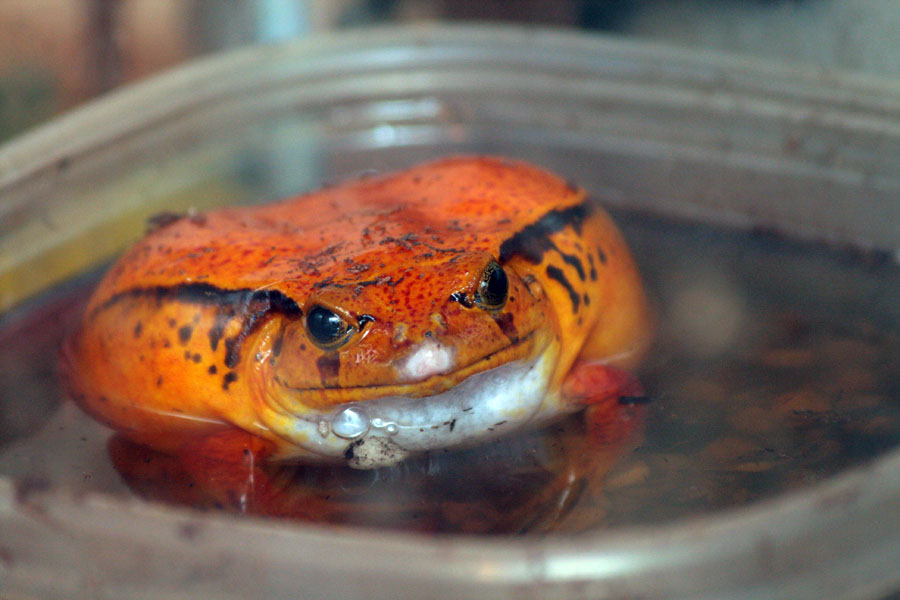Tomato Frogs, whose scientific name is “Dyscophus guineti”, are from Northeast Madagascar. The common name comes from the frog's bright red color, and when threatened, the tomato frog puffs up its body and looks just like a round, ripe tomato! The Madagascan Tomato Frog is found only in Madagascar and there they are limited to the northwestern part of the island. They live in a variety of freshwater habitats, including rivers, wetlands, gardens, and canals. Tomato frogs can adapt to a variety of habitats, including urban areas. Although this frog lives in and around water, it is not a very good swimmer. The species of tomato frog is not threatened; however, its numbers are likely decreasing due to habitat loss. The Wildlife Conservation Society (WCS) has made conservation efforts in tomato frog habitat. In the mid-1990s, WCS worked with the Madagascar officials to establish Masoala National Park, an 840-square-mile area of tropical humid forest in northern Madagascar where tomato frogs, leaf-tailed geckos and many other endemic species are found. Masoala contains 1 percent of the world’s biodiversity.
Tomato frogs eat ants and other insects, larvae, and other invertebrates.
The tomato frog inflates itself when it feels threatened, looking exactly like a round, red, ripe tomato. If a predator grabs a tomato frog in its mouth, the frog's skin secretes a thick substance that gums up the predator's eyes and mouth, causing the predator to release the frog to free up its eyes. The gummy substance contains a toxin that occasionally causes allergic reactions in humans. The allergic reaction will not kill a human and the frog secretes it only when frightened. The lifespan of the Tomato Frog can be from 6 to 8 years.
Below and on page 2, are pictures of our darling Tomato Frog, Hot Tamale.


